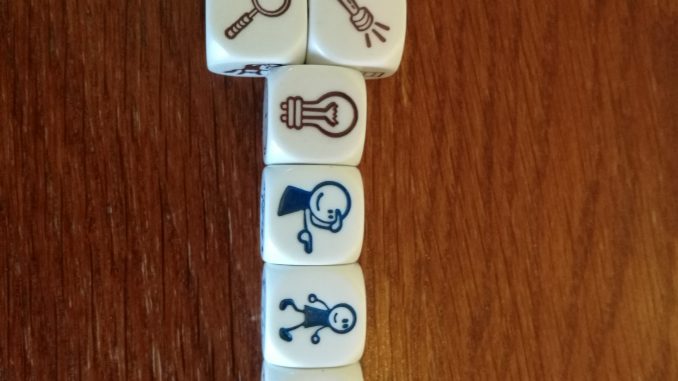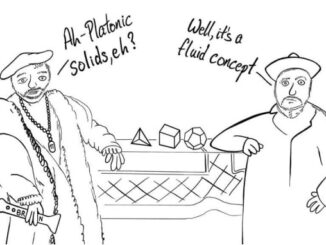
Self-Gamification and the Swiss Army Knives
Self-Gamification is the art of turning our own lives into fun games, of which we are both the designers and the players. It is the application of game design elements to our own lives. Self-Gamification is a self-help approach showing us how to be playful and gameful, but it is not only about games. It has three dimensions or tools for it to unfold and have the maximum outcome.
Here are the tools which Self-Gamification brings together.
First of all, it is anthropology.
“Anthropology is the study of the human species, from DNA to language.” — Cameron M. Smith, Anthropology For Dummies
So, you study whatever is inside and outside you non-judgmentally as anthropologists do when they study a fascinating, for them, culture. Thus, you observe all the dynamics that happen in front of you (your thought processes, the world around you, and your feelings and reactions towards it). And you observe it with curiosity and interest, but without judging, validating what you see, or comparing it to what you already know.
Then you apply kaizen, which is both a philosophy and strategy to break anything you want to achieve or any challenge you need to face into small bits and process them that way, one small “bite” at a time. So, all while being utterly aware, you identify the smallest step you can take toward your dreams or the smallest bit of the challenge you are facing that you can solve with what you have available here and now.
And finally, you tap into gamification and all things gameful and playful. You identify how you can take that little step and appreciate it in a fun way.
And then you repeat—especially any time you need help.
These three tools work amazingly together. They come together into one strong synergy because they build upon each other as well as complement and support each other.

I consider Self-Gamification as one of those ultimate and utterly useful tools, which embraces three skill-sets, just like a simple Swiss Army Knife that can help to cut, open a can, and to repair something with an in-built screw-driver, for example.
Isn’t it amazing to know that we always have available a universal tool to turn any challenge, any task, however big or daunting into a fun game? I tested this theory, and this tool many times, and it became a practice. Even before I formulated this approach, and I test it today again and again. Both because I enjoy it, and also to find out what else is possible without pressure or effort, and instead with fun and pleasure. Even, or especially, in times of crisis.
The Core Gameplay Loops in Self-Gamification

When describing my background in terms of gamification, I often say that I am a non-gamer, in other words, one of those who play games, and especially video games, very occasionally and prefer spending their free time doing activities other than games. And after turning my life into games continuously for several years now, I am still a non-gamer in the traditional sense of games.
But I don’t seem to be able, or willing, to stop turning my life into fun, for me, games. On the contrary, I find myself to design and play my self-motivational games more and more, both in times of joy and those of being upset.
I contemplated why that could be so and even gave interviews on that, but recently I discovered a game mechanic, which could explain why I am so engulfed into turning my life into fun games.
A note to game and gamification designers: This core mechanic of games will be well-known to you, but please bear with me and in mind that I am a non-gamer playing a role-playing game of an anthropologist studying among other this fantastic and still very fresh and new for me game design and play cultures.
Thus, the discovery of this core mechanic, which I made during the revision process of the little book I wrote recently during the lockdown 2020 period and which I call Gameful Isolation (https://www.victoriaichizlibartels.com/gameful-isolation/), was a eureka moment for me.
Here is this game mechanic:
“At the heart of your game’s design, there are core mechanics, and the core gameplay loop. In short, it’s the main activities that structure the entire design and the players engage into repeatedly, in a looping sequence. It’s part of the essence of the game, something you cannot remove without fundamentally altering the experience.”
“In the original Mario, this would be walking, running and jumping. The various enemies, bosses, and environments stem from the core mechanics. They are here to surprise the player, challenge his skills and keep the experience fresh. In other words: to exploit the core loop to its fullest, and add extra depth to the experience.” — Game Analytics (https://gameanalytics.com/blog/how-to-perfect-your-games-core-loop.html)
After learning about the core game (or gameplay) loops, I realized that Self-Gamification, and thus also each challenge, project, or activity turned into a self-motivational game, has a specific core gameplay loop too.
In fact, it has two. These two loops are closely related to the three approaches, which Self-Gamification brings together into one strong synergy.
Here is the main Self-Gamification loop:
- Become aware (assess) —> play the “Anthropology of Now Game”;
- Take the small step —> play the “Kaizen Game”;
- Appreciate (celebrate) it —> play the “Appreciation Game.”
And the first step of awareness, or the “Anthropology of Now Game,” has a gameplay loop of its own:
- Become aware of your starting point: your circumstances at this moment, how you feel, and the state of your mind.
- Remind yourself of your goals and dreams for each task. What is the win-state there?
- Identify the smallest and most effortless step that will take you onto the path from your starting point closer towards the goal of your challenge, project, or activity “game.”
- Recognize at any given moment the fun ways or elements to take and appreciate both small steps (that bring you experience points, for example), the intermediate goals (the levels in your games), and reaching the goal (the win-state).
The fact that each of our lives is so surprising and multi-dimensional let me “exploit the core loop to its fullest, and add extra depth to the experience” of Self-Gamification naturally, without me needing to force anything.
The only thing I need to do is to be willing to see what is in front of me as a game and actually play those games, including the design and appreciation “games.”
P.S. To find out more about the Gameful Isolation project, where you can access a video series for each of the chapters of the future book, visit the Gameful Isolation page
- The Collaborative-Competitive Paradox of Self-Gamification - 14th January 2022
- Self-Gamification and the Core Gameplay Loops - 21st August 2020
- What playing games and turning life into games can teach us? - 17th April 2020





Be the first to comment